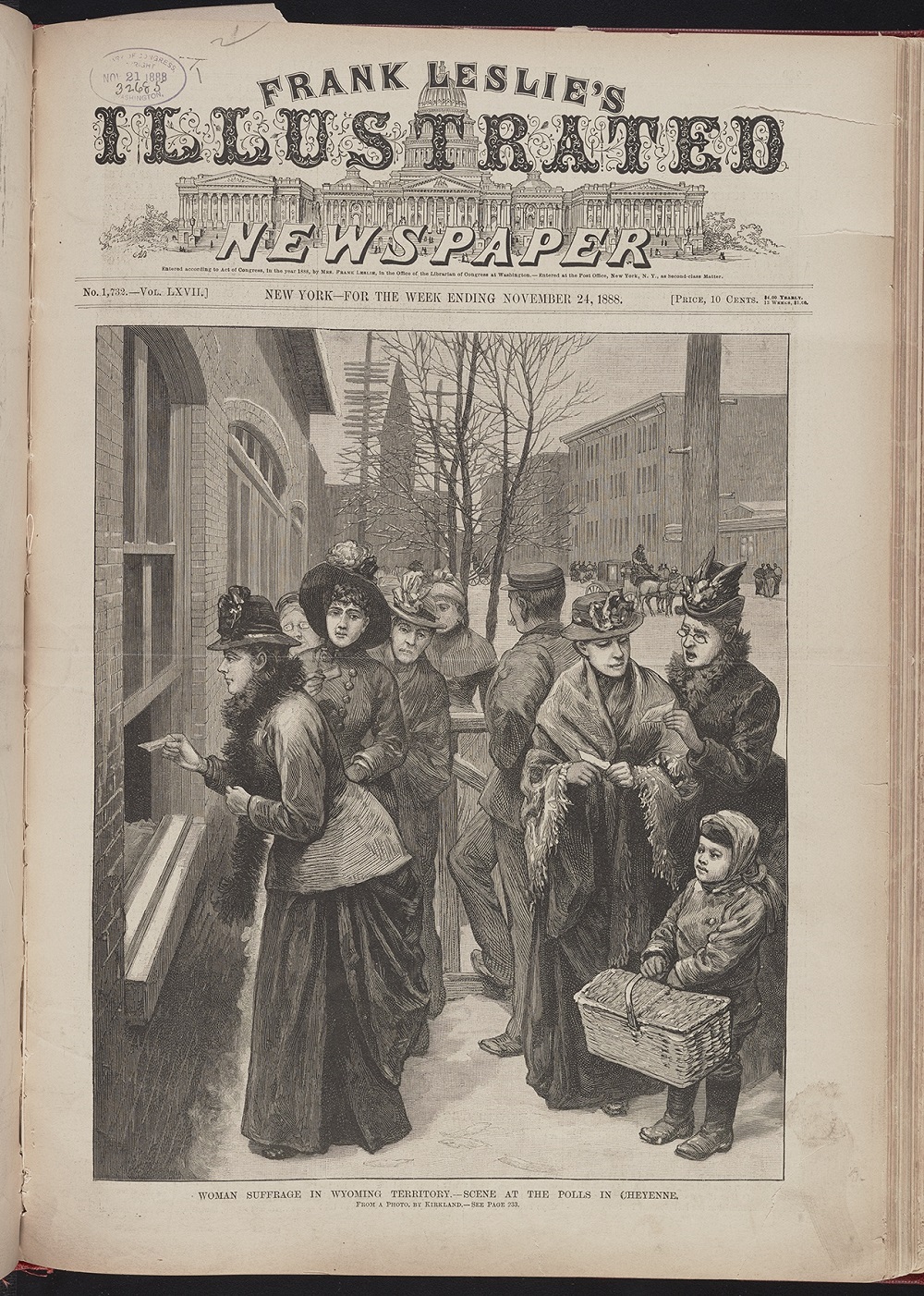Document Text |
Summary |
| AN ACT TO GRANT TO THE WOMEN OF WYOMING TERRITORY THE RIGHT OF SUFFRAGE AND TO HOLD OFFICE | A law to grant Wyoming women the right to vote and hold political office |
| Be it enacted by the Council and House of Representatives of the Territory of Wyoming: | The Council and House of Representatives of the Territory of Wyoming is passing the following law: |
| Sec. 1. That every woman of the age of twenty-oen years, residing in this territory, may, at every election to be holden under the laws thereof, cast her vote. And her rights to the elective franchise and to hold office shall be the same under the election laws of the territory, as those of electors. | Every woman who is 21 years old and lives in Wyoming territory may vote in Wyoming elections. Her rights to vote and hold political office will be the same as those of any citizen. |
| Sec. 2. This act shall take effect and be in force from and after its passage. | This law will be in effect as soon as it is approved. |
| Approved, December 10th 1869. |
An Act to Grant to the Women of Wyoming Territory the Right of Suffrage and to Hold Office. , 1870. Cheyenne, W.T.; S. Allan Bristol, Public Printer, Tribune Office. Photograph. https://www.loc.gov/item/awhbib000036/.
Background
The debate over women’s suffrage was raging in 1869. Congress had just passed the Fifteenth Amendment, giving all men the right to vote regardless of their race. But many suffragists were angry that the amendment did not grant women the right to vote.
That same year, the inhabitants of the new Wyoming Territory elected a legislature to create their laws. Every state and territory is allowed to determine its own voting regulations so long as they don’t conflict with rights guaranteed by the Constitution. When the legislature was determining its voting laws, the President of the Council of the Wyoming Territorial legislature, William H. Bright, proposed a bill that would grant women full suffrage. To everyone’s surprise, it passed with no opposition.
Wyoming was then the first and only place in the U.S. where women had the right to vote. There were many different explanations offered about why the bill passed so easily when the rest of the country was fiercely debating the idea. Some legislators claimed that they supported the bill because they thought suffrage would attract women settlers and Wyoming needed more people to become a state. Some claimed they thought the whole thing was a joke that got out of hand. Some said it was only fair that women should be allowed to vote now that all men had the right. Regardless of the reason, the bill delighted suffragists across the nation, who began to wonder whether women’s suffrage could be achieved by passing laws state by state.
About the Document
The first source is an illustration of Wyoming women voting in the 1888 election. When Wyoming became a state in 1880, it was the first state to guarantee women the right to vote. The next would be Colorado in 1893.
The second source is the text of Wyoming Territory’s women’s suffrage bill. It not only granted women the right to vote but gave them the power to hold office.
Vocabulary
- Constitution: The governing document of the United States.
- legislature: A group of elected leaders who make laws.
- suffrage: The right to vote.
Discussion Questions
- What national and local circumstances might have influenced Wyoming’s territorial legislature to grant women suffrage?
- Why were suffragists across the nation energized by Wyoming’s suffrage bill?
- What does this story reveal about the potential of life in the West for American women?
Suggested Activities
- To learn more about the mid-1800s fight for equal rights for women, see:
- To help students understand why women in the U.S. wanted the right to vote, see Campaign Against Indian Removal.
- To learn more about the debate over the passage of the Fifteenth Amendment, see “All Bound Up Together” and Life Story: Frances Ellen Watkins Harper.
Themes
POWER AND POLITICS
New-York Historical Society Curriculum Library Connections
To learn more about the fight for civil rights in the Reconstruction era, see Our Composite Nation: Frederick Douglass’ America







